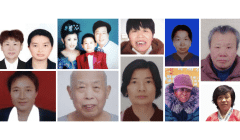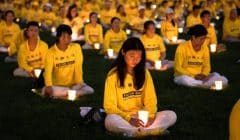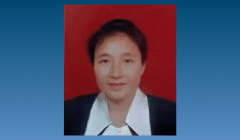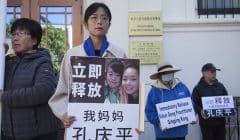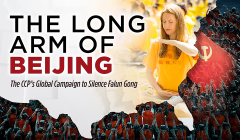Death Trap – How One Chinese City Resorted to Atrocities To Control Falun Dafa
Pressured by their Superiors, Weifang's Police Tortured Members of Banned Sect
By Ian Johnson, Wall Street Journal | Dec 26, 2000
WEIFANG, China — Rising out of the North China Plain in a jumble of dusty apartment blocks and crowded roads, this is an unremarkable Chinese city in every respect but one: Local police regularly torture residents to death.
Since the beginning of the year, when police killed a 58-year-old retiree, at least 10 more Weifang residents have died in police custody, according to relatives and a human-rights monitoring group. All were practitioners of the spiritual group Falun Dafa, which the central government banned last year. Across this country of 1.3 billion, at least 77 Falun Dafa adherents have now died in detention, according to reports by human-rights groups. Weifang, which has less than 1% of the national population, accounts for 15% of those deaths.
Why?
The answer has its roots in imperial China, when the country developed a system of social control that is still used today. It puts huge pressure on local officials to comply with central edicts — but gives them absolute discretion over implementation. For officials running Weifang, that meant they were under strict orders to eliminate the huge number of Falun Dafa protesters in their district but faced no scrutiny of the methods they used.
That led to a series of bizarre and ultimately tragic decisions. Under intense pressure to stem the flow of protesters heading to Beijing, Weifang officials stationed police in Beijing, ran their own prison there and sent detainees to “transformation centers” back home where they were beaten until they renounced their faith, or died. The ferocity of police in these centers only increased after higher-level officials started fining their subordinates for each protester who arrived in the capital, according to city officials and former detainees.
Besides explaining the mechanics of death, this city’s tale also points to the direction this conflict is likely to take in the future. With the two-year anniversary of Beijing’s still-unsuccessful crackdown on Falun Dafa approaching in the spring — a duration that far exceeds any other challenge during the Communists’ five decades in power — efforts to crush the group have become a grinding battle between a stubborn government and a hard core of believers. Like the Tiananmen protests of 1989, it has left countless scars below the surface of society, and has become another marker on China’s painful path to modernization.
Weifang hardly seems like the sort of place that would become the focal point of tragedy. Indeed, if one were trying to find an Anytown in China, Weifang might be it. It has a famous past as a commercial center and is the hometown of flowing, silk-covered Chinese kites. Today, it is a small industrial center in one of China’s wealthiest provinces and boasts a per-capita income slightly above the national average.
Like most Chinese cities, Weifang feels more rural than its population would indicate. Officially, the greater metropolitan area has eight million residents, but this includes a huge swath of densely populated countryside. The urban center has just 620,000 people, and its streets are filled with farmers driving their tractors to markets. Like most parts of China, foreigners are still so rare that people stop and stare when one walks past.
Falun Dafa, which is also known as Falun Gong, caught on early here and across Shandong province, a densely populate coastal region that has developed rapidly in the past decade. Some say the group’s Shandong organizers were especially gifted; others note that its founder paid a successful visit to the province several years ago. Falun Dafa, which teaches slow-motion calisthenics and moral precepts drawn from Taoism and Buddhism, certainly fit in with the region’s spiritual tradition: Confucius’ birthplace, Qufu, and one of China’s holiest Taoist pilgrimage sites, Mt. Tai, are located nearby.
By 1999, Weifang had one of heaviest concentrations of believers in the province, with an estimated 60,000 adherents, according to an unpublished government report. The town’s parks and squares had regular meeting points for members, who typically practice their exercises every morning. That ended when about 10,000 Falun Dafa practitioners protested in downtown Beijing in April, 1999, asking the government that their group be legalized. The central government responded by banning Falun Dafa in July; Weifang authorities followed suit, rounding up local Falun Dafa organizers and closing down the public exercise spots.
Initially, Weifang was quiet, adherents and government officials say. In November of last year, however, Beijing staged show trials of several prominent Falun Dafa organizers, spurring what has become a steady stream of protests in the capital. It was at that time that the woman who would become Weifang’s first victim, Chen Zixiu, traveled to Beijing. After being arrested, sent back to Weifang and then released, she was detained again earlier this year and beaten to death, according to eyewitnesses. Her case was reported in The Wall Street Journal earlier this year.
The officials’ brutality toward Ms. Chen seemed exceptional at the time. Torture in China is common, but even Ms. Chen’s family thought that her death was an aberration, the result of an especially cruel jailer. Since then, however, Falun Dafa practitioners have died regularly in Weifang’s prisons, about one a month, casting doubt on the idea that one person is responsible. Instead, it appears that the violence is systemic, stemming from policies adopted in Beijing and implemented locally.
Officials in Beijing set up the framework for the killings one year ago after they became impatient with the continued flow of protesters from around China into the capital. Deciding drastic measures were needed, they reached for a tried-and-true method of enforcing central edicts, one honed over centuries of imperial rule.
Based on the 2,200-year-old bao jia method of controlling society, the system pushes responsibility for following central orders onto neighborhoods, with the local boss responsible for the actions of everyone in his territory. In ancient times, that meant the headman of a family or clan was personally responsible for paying taxes, raising troops and apprehending criminals.
A variant of this is now in use to implement even broader policy goals. After the Communist Party launched economic reforms in the late 1970s, it had great success by signing “contracts” with peasants and factory chiefs, who had to deliver a certain amount of grain or industrial output but were given complete latitude over the methods used. By the late 1980s, provincial governors were also signing similar contracts, being held personally responsible for maintaining grain output in their province or holding down births to a certain level.
Now the problem was Falun Dafa. The government’s Office 610, a bureau that was coordinating the crackdown, issued an order in December 1999, telling officials of local governments they would be held personally responsible if they didn’t stem the flow of protesters to Beijing, according to Weifang officials. As in years past, no questions would be asked about how this was achieved — success was all that mattered.
Weifang officials knew the policy meant trouble for them. China has other concentrations of Falun Dafa believers, such as in the country’s northeast where the group was founded. But those are remote from the capital. Weifang is located just 300 miles southeast of Beijing, making it easy for protesters to travel to the capital even after the city took an initial precaution of sending security agents to train and bus stations. “After a while the police were waiting for us at the train station, so we started to bike and walk to Beijing,” confirms a 48-year-old practitioner. “It takes four days to bike to Beijing, 12 days to walk. I did it both ways.”
As the flow of protesters continued into the new year, central authorities didn’t have far to look to find a scapegoat. The man held responsible was Wu Guangzheng, the 62-year-old governor of Shandong province. Mr. Wu is a member of the Communist Party’s 21-member Politburo, making him one of the most powerful men in China. But Mr. Wu was in a precarious position. Most Politburo members are central-government officials. Only two governors sit on the Politburo: Mr. Wu and the governor of Guangdong province, which doesn’t have many protesters. That meant Mr. Wu was a focal point of Politburo meetings called to discuss the protests. “The central government told Governor Wu that he was personally responsible. He risked losing his job if he didn’t do something,” said a Weifang official, now retired. “Everyone knew the pressure he was under.”
Mr. Wu quickly found ways to transfer the pressure. First, Weifang city officials say, Mr. Wu ensured that every official in the city knew what was at stake, by calling a meeting of police and government officials to a “study session.” There, the central government’s directive was read out loud. “The government instructed us to limit the number of protesters or be responsible says another government official.
Such methods quickly led to abuses. Several Falun Dafa adherents imprisoned by local police early this year say their captors told them that their continued protests threatened to derail officials’ careers. “One policeman beat me with truncheons,” says a 43-year-old factory worker imprisoned December 1999. “He said we were responsible for his boss’s political problems.”
That detainee was beaten after being arrested in Beijing and transferred back to his hometown of Weifang. City officials said such arrerests reflected badly on Governor Wu and the rest of the province because people arrested in Beijing are booked by central security agents and their hometown noted. Statistics are then compiled, and provinces with a high number of protesters– like Shandong — are criticized. Beating people in Weifang might eventually slow down the number of protesters, but authorities wanted results immediately.
So, earlier this year, local officials devised a plan to skirt Beijing’s monitoring of their performance. Like many other cities, Weifang maintains a permanent representative bureau in the capital that functions as a lobbying office and a hostel for bureaucrats visiting the capital on busine. The city doubled the office’s staff to 40 and stationed about a dozen police officers in Beijing. Their cars, identifiable by their license plates often park on the side streets around Tiananmen Square when protests take place.
According to an employee in the office and Falun Dafa adherents were arrested. Weifang residents detained in Beijing were then handed directly to Weifang police, who drove the practitioners to the representative office, which now functioned as a prison. The staff there watched over them until they were transferred back to Weifang. The arrangement suited Beijing police, who were able to shift some of their work burden. And it helped Weifang’s image, because detainees who wouldn’t be booked in Beijing prisons show up on the central government’s tally of laggard provinces.
Few detainees say they were beaten in the Beijing representative office. Instead, they were sent directly to one of seven locally run transformation centers” — which earlier on were called “education and study centers” –set up in Weifang. It was at these unofficial prisons that the killings occurred.
Use of these “centers” coincided with another policy change that added what probably was the final ingredient needed for the killings to take place: a ferocity brought on by fear of financial ruin.
Instead of just threatening to ruin local officials’ careers, Mr. Wu’s colleagues in the provincial government started to fine them as well. The twist was simple: The provincial government fined mayors and heads of counties for each Falun Dafa practitioner from their district who went to Beijing. The mayors and county heads in turn fined the heads of their Political and Legal Commissions, holding them responsible. They in turn fined village chiefs, who in turn fined the police officers — who administered the punishment. The fines varied from district to district, but in one Weifang district the head of the Political and Legal Commission was fined 200 yuan per person protesting in Tiananmen Square, or about $25– a potentially ruinous amount given that his monthly salary is only about $200, according to one of the official’s colleagues.
The fines were illegal; no law or regulation has ever been issued in writing that lists them. Officials say the policy was announced orally at government meetings. “There was never to be anything in writing because they didn’t want it made public,” says a member of the city’s Political and Legal Commission.
Thus a chief feature in torture victims’ testimony is that they were constantly being asked for money to compensate for the fines. For example, the family of Weifang’s first victim, Ms. Chen, was told to pay a $241 fine in exchange for her release. When the family balked, Ms. Chen was held another night and then beaten to death.
Relatives and fellow prisoners of other victims tell similar stories. For example, the most recent prisoner to die in Weifang, Xuan Chengxi, was killed in October after officials asked him repeatedly for money, according to two people who tended to his wounds before he died. All the members of his family, however, were Falun Dafa practitioners and had lost their jobs, leaving them unable to pay. Police responded by beating him with rubber truncheons and dousing him in cold water for several hours before he fell into a coma and died, the witnesses say.
Weifang city officials — many of whom now privately worry that the crackdown has been a terrible mistake — say none of the police directly involved in the deaths have been reprimanded. In fact, the three officers who oversaw Ms. Chen’s interrogation have since been promoted, they say, true to the tradition of giving local authorities a free hand, no questions asked.
The cumulative effect is that 11 Falun Dafa practitioners have died from abuses they suffered in Weifang prisons this year, according to family members and eyewitnesses interviewed for this article. An independent human-rights monitoring group in Hong Kong, the Information Center for Human Rights and Democracy, has verified one more death, for a total of 12. According to the center, the rest of Shandong accounts for another 12 victims, for a total of 24. The next-highest number of deaths is 14 for Heilongjiang province.
Nationally, the latitude given by the central government was likely responsible for other deaths as well. Falun Dafa claims a total of 91 practitioners have died from police brutality; Amnesty International, the London-based human-rights group, says the total is 77.
Besides resulting in deaths, the policy has driven people underground, ruined careers and split families. Two Falun Dafa adherents who worked in the city government, for example, have been forced to leave their homes. Like dozens of other adherents, they live with relatives out of fear of arrest.
Their daughter, also a Falun Dafa practitioner, was kicked out of university for refusing to renounce her faith and now floats from family to family. “This won’t go on much longer, will it?” she asks a visitor. “The government has to relent and legalize us. That’s all we’re asking.”
The effects on society of such systematic brutality is hard to gauge. None of the deaths have been reported in the Chinese media. Only those directly touched by the crackdown know of its scope and ferocity. In a country of 1.3 billion, most are ignorant and many accept the state-run media’s explanation that Falun Dafa is a dangerous cult, a mind-controlling organization that must be crushed at all costs to preserve stability.
But in a small city like Weifang, word of the deaths has spread quietly. In the city’s impressive kite museum, a curator’s eyes widen when he is asked about the killings. “No one can talk about these things,” he says, unpacking boxes of the city’s trademark wood-framed kites wrapped in brightly colored silk. “But a lot of people know.”
© 2000 Dow Jones and Company, Inc.
http://www.pulitzer.org/year/2001/international-reporting/works/falungong10.html


